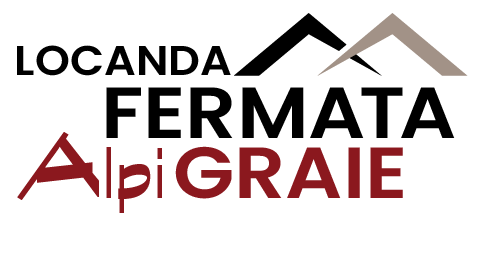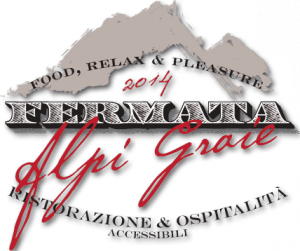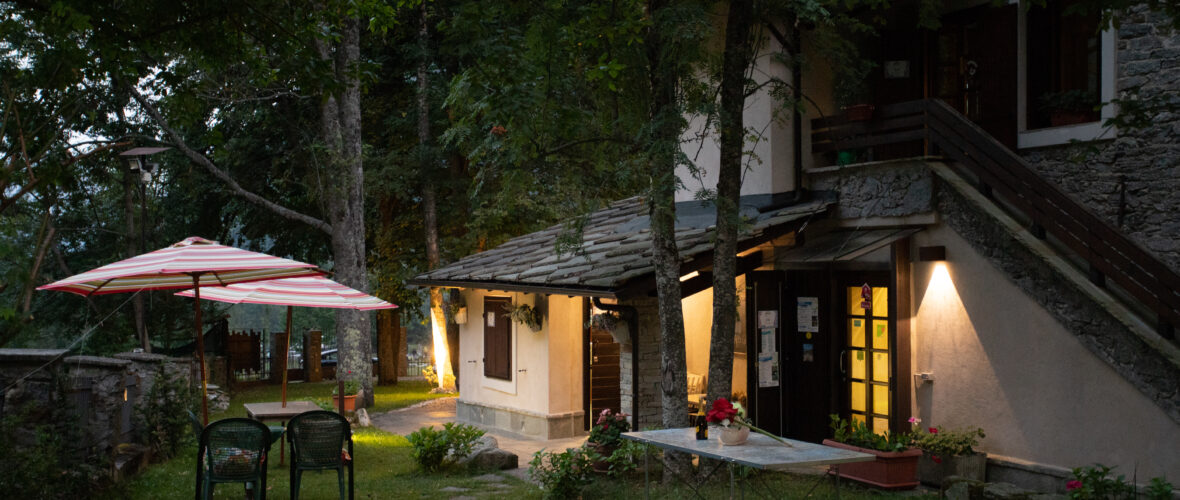The headquarter of our Refuge is Villa Sobrile, which bears its name from the painter Giuseppe Sobrile, as well as the road we made in 2012, when our project was born.
The house is immersed in the greenery offers enchanting views of the surrounding peaks: this environment inspired many of the Painter’s works. From the room on the first floor that looks towards the valley, obtained from what was his studio, the large window frames the same landscapes that he painted, in all seasons.
Between 2012 and 2014 we refurbished it internally to make it accessible to all, including the elevator, and creating an expansion that could accommodate the restaurant and the terrace (which in summer becomes a solarium sorrounded by nature).
But now I’ll tell you how Villa Sobrile became Fermata Alpi Graie!
One Saturday in the hot summer of 2011, me and my husband ran away from the city, looking for some fresh air. It just so happened that we stopped on a bench at the entrance to the small hamlet of Forno Alpi Graie … exactly in front of Villa Sobrile of which we had never seen before. A few weeks earlier, my husband had told me: “try to look for a cottage to renovate, hilly, maybe at the seaside, but in a breezy place…”.
That Saturday, sitting on the bench in Forno Alpi Graie, I asked my husband if he was really sure he wanted a house by the sea, since heat has always been his worst enemy. He replied: “try to find anything here in the area … this is the right climate for me”. So I started the search, a short search to tell the truth, because within a few days I was directed to this villa which had a “for sale” sign into its garden, with a phone number. Someone told me that the villa was “of the nuns ”, but I didn’t know anything more. We did a scouting tour a few days later, and he got so fond of the place that he told me to call the phone number and hear what the request was.
So I did. A shrill voice answered the phone. I remember very well that phone call:
– Hello, I’m calling for information on the house for sale in Forno Alpi Graie”
– Excuse me, but who are you? (in a rather annoyed tone)
– My name is …, me and my husband saw the house and the sign for sale, and so I tried to call …
– Oh well, but you can’t talk about these things on the phone, come here and let’s talk about it in person !! Where are you now?
– I’m at work in my studio in Turin, via Valeggio …
– You are so close to us, we are in via Nizza. I’ll wait for you here in a quarter of an hour!
So I ran out and I reached the convent of the Daughters of Charity of San Vincenzo. There, Sister Mirella was waiting for me, who had answered the phone shortly before … she is a general in a nun’s habit, however … we became friends, and we still are today.
However, the building was too big for our family, so I said “let’s make a B&B”. But I wasn’t serious!. My husband, on the other hand, took me seriously… and so our adventure on the Graian Alps started. Furthermore, he also added that in his opinion it was essential to be able to feed the guests who would have stayed with us!
I absolutely didn’t want to hear about a restaurant. But fate was adverse to me, and so were the consultants I met during the entrepreneurial training that I followed for the preparation of the business plan : they insisted on the need to offer meals to guests, to make the project sustainable.
Much to my dismay, I gave up my weapons and began attending a professional cooking course at the Chefs’ Association in Turin.
They were right, I must admit!
Guests asked to have dinner almost always and the requests were more and more: so here we are, to a new piece of our history, to open the doors of our restaurant to everyone, until now reserved for only overnight guests.
Restaurant history
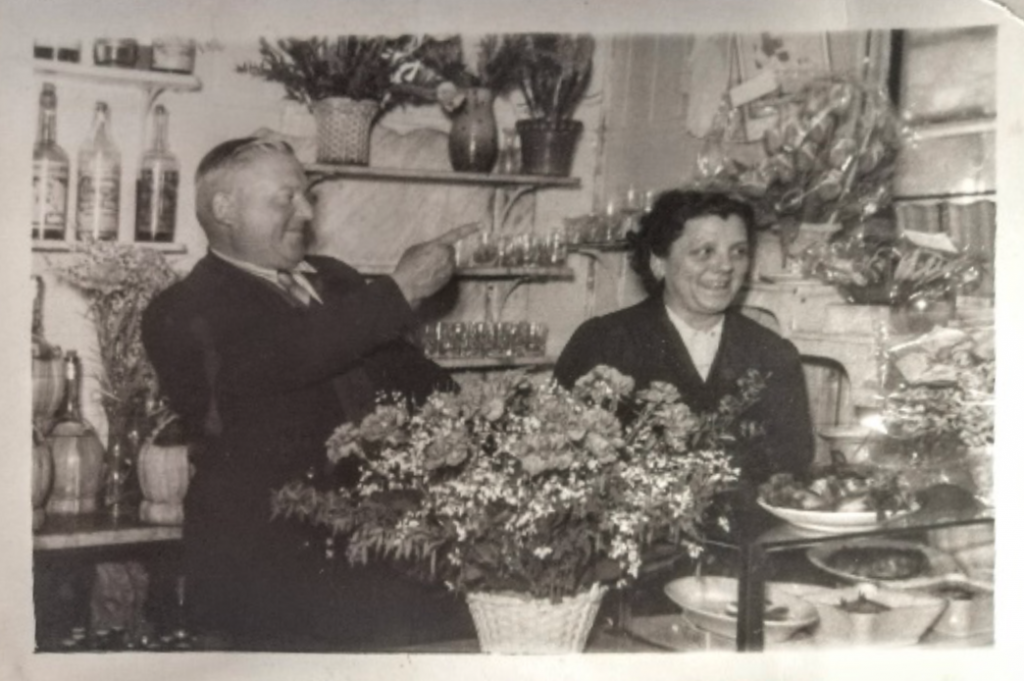
Then, one day, I come across an old black and white photo.
It is my aunt Olga, my grandmother’s sister, with her husband Carlo. She opened a very small restaurant on the famous Rialto bridge. They prepared packets of fried fish – what today we would call street food. Later they opened a serious restaurant, the “Poste Vecie”; then it passed to another property but still exists today in Venice.
But the stories that I often heard from my grandmother came from that chubby hole on the Rialto bridge, and finding that photo made me recollect some memories and emotions.
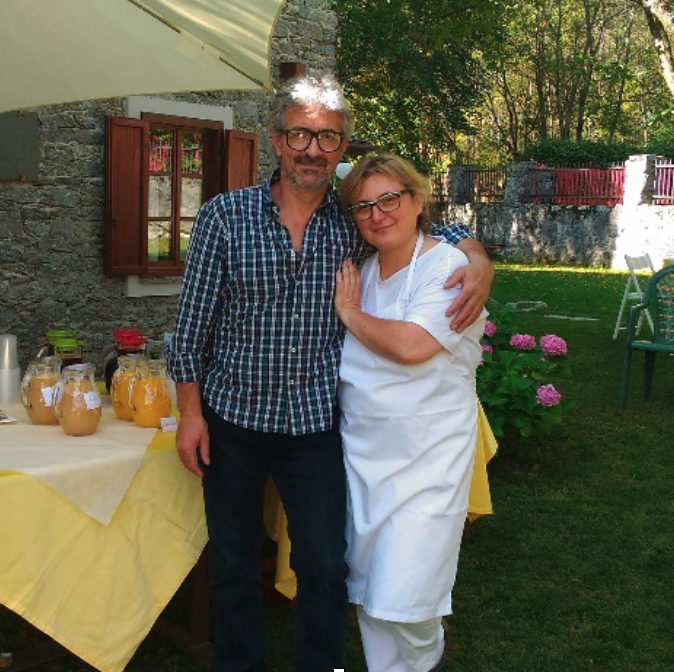
I let myself be carried away by the thought that “certain thigs become from our DNA”, and I think it is no coincidence that, at a certain point in my life, it “happened” to find myself in front of a restaurant business. And maybe all those tales, which for me as a child took the form of a dream, were the fuel that set in motion the reality that today is called “Fermata Alpi Graie”.
This instead is us, Pasquale and Elena.
Pasquale has always had another job, he is not part of the staff … but we make every decision about Fermata Alpi Graie together (even by clashing!).
For this reason I chose to conclude this emotional and illustrative roundup with a photo of us.
Because without him, all this would have remained a dream.
THE PAINTER AND HIS house
Giuseppe Claudio Sobrile was born in Turin on May 13, 1879.
He studied at the Accademia Albertina in Turin and was a pupil of Pier Celestino Gilardi and Giacomo Grosso. He dealt extensively with the figure, breaking away from the example of the masters to re-enter the taste, in turn very varied, of Felice Carena, Cesare Ferro and Domenico Buratti, with whom he shared the tendency towards detailed drawing and a certain decorativism.
After the First World War he chose Forno Alpi Graie as his home, with a clear choice oriented to the alpine landscape and rustic views, achieving particular positive results in the visions of snow. But he is equally known for his still lifes of wildflowers: large compositions with sumptuous colorful bouquets. He died in Forno Alpi Graie on 6 September 1956, as the plaque that his wife dedicated to him recalls, and which you can find near the external staircase of the villa.
He rests in the small cemetery of Forno Alpi Graie, near his wife.
The last retrospective was staged at the Mole Antonelliana in Turin in 1992.
Villa Sobrile was built the 1920s by the painter Giuseppe Claudio Sobrile, concurrently with his transfer to Forno Alpi Graie. The building can be placed in the context of villas and buildings born with the tourism development of the Lanzo Valleys from the second half of the nineteenth century, and has typological characteristics close to the local mountain tradition and to the Swiss chalet, according to a current construction typical of those years. Villa Sobrile has preserved its architectural peculiarities, maintaining the original layout and structure, up to the present day. It is the last, in the direction of the river, of a large group of villas and buildings with the same typological characteristics, all built in the early decades of the twentieth century.
We have always thought of reviving Villa Sobrile as a house-museum, and we would like to collect memories of the Painter.
